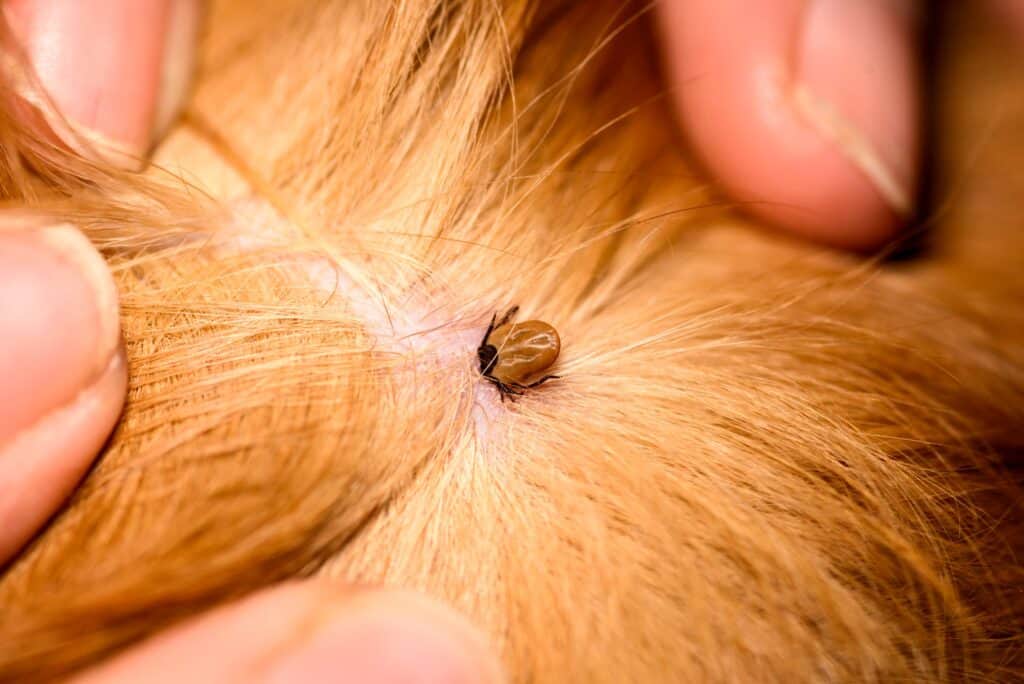Tick Season in Canada and Lyme Disease Treatment for Dogs
Tick Season in Canada and Lyme Disease Treatment for Dogs

Ticks are infamous for feeding on the blood of various mammals, but the fact that they spread disease secures their reputation as one of the world’s most revolting insects. Without a doubt, the sight of an engorged tick attached to a pet rattles our sense of health and safety. With the proper prevention and attention, you can avoid dealing with this unfortunate disease in your pets.
Taking Control
The primary species feared in and around Ontario is the blacklegged tick (also known as the deer tick). After they ingest the bacteria that causes Lyme disease (Borrelia Burgdorferi) from deer, these ticks spread it to their next victim. Cases of Lyme disease surge in the spring and summer when ticks emerge from a state of dormancy. Hungry for their first blood meal of the season, ticks lie in wait for their next host to walk by.
Avoiding Tick Habitat
Ticks can be found in tall, overgrown grass, marshy areas, and thick vegetation. Without wings, these flightless, 8-legged relatives of spiders sense approaching prey, and wait for close enough proximity to latch onto fur, legs, or even clothing. Most hosts do not realize they’ve been bitten by a tick.
Lyme Disease in Dogs
Borrelia Burgdorferi may go undetected for years in a host’s immune system. Consequently, symptoms of the disease may not be immediately noticeable. Clinical signs of Lyme disease in dogs include:
- Weight loss and low appetite
- Joint pain and swelling
- Alternating joint lameness
- Lethargy
- Blood in the urine
Daily Protocol
We recommend checking your pet’s skin and coat every single day during peak tick season. Run your hands on their legs, between the toes, belly, tail, neck, back and head. Some ticks can be very hard to spot, so invest in a fine-toothed comb. A bullseye pattern on the skin can reveal a bite site.
Moving Ahead
A strong pair of tweezers in your pet’s first-aid kit can make tick removal easier and successful. Be sure to fully remove the entire tick. Accidental separation of the head or mouth parts can lead to a bacterial infection.
If you aren’t sure how long a tick has been attached to your pet, it’s a good idea to have them tested for Lyme disease. Tests detect antibodies of Borrelia Burgdorferi as early as 3-5 weeks following a tick’s removal. A urine test and a secondary blood test can reveal an active infection When Lyme disease is treated early with antibiotics, dogs can make a full recovery.
The Best Medicine
Keeping your pet’s year-round parasite prevention medication up to date is a major step. We can also discuss the Lyme disease vaccination if your dog is at a higher than normal risk of entering known tick habitat.
Please call us at (705) 223‑3404 with any questions or concerns. Our staff at Parkside Animal Hospital is always here to help.
